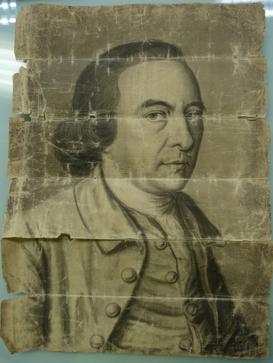Emanuel Mendes da Costa facts for kids
Quick facts for kids
Emanuel Mendes da Costa
FRS
|
|
|---|---|
 |
|
| Born | 5 June 1717 |
| Died | 31 May 1791 (aged 73) London, England
|
| Known for | British Conchology, embezzlement of Royal Society funds |
| Spouse(s) | Leah del Prado, Elizabeth Skillman |
| Children | One daughter by second wife |
| Parents |
|
| Scientific career | |
| Fields | Botanist, naturalist, philosopher |
| Institutions | Clerk to the Royal Society |
Emanuel Mendes da Costa (born June 5, 1717 – died May 31, 1791) was an English scientist. He was a botanist, who studies plants, and a naturalist, who studies all living things. He was also a philosopher and a collector of interesting notes and old writings.
Da Costa is well-known for his book British Conchology, which is about shells. He also worked for the Royal Society in London.
Life and Discoveries
Emanuel Mendes da Costa came from a Sephardi family. His family had moved to England from Portugal in the 1600s. His parents were Abraham and Esther da Costa.
From about 1736, Emanuel became very interested in natural history. He started to buy and sell shells, corals, and fossils. He also wrote letters to other famous naturalists. These included Carl Linnaeus and Sir Hans Sloane.
In 1747, da Costa became one of the first Jewish Fellows of the Royal Society of London. This was a big honor. Important people like Martin Folkes supported him.
In 1750, da Costa married his cousin, Leah. Before this, he had faced some financial difficulties. He was even briefly imprisoned for unpaid debts.
In 1763, da Costa got a new job at the Royal Society. He became the clerk, librarian, and keeper of their collections. However, in 1767, it was discovered that he had misused some of the Society's money. He was collecting membership fees but did not give all the money to the Society right away. This led to him being imprisoned for five years.
After his release, da Costa found it hard to make a living. He gave talks about fossils and continued to deal in shells and minerals. His last major scientific book was British Conchology in 1778. This book included some stories about his own life.
Some of his friends stayed loyal to him even after his imprisonment. Emanuel Mendes da Costa passed away in his home in London. He was buried in a Jewish cemetery there.
Da Costa was also a member of several other important groups. These included the Antiquarian Society of London. He was married twice. His first wife, Leah, died in 1763. His second wife, Elizabeth Skillman, had a daughter with him.
Major Works
Emanuel Mendes da Costa wrote several important books and papers. His publications include:
- A Natural History of Fossils, published in 1757.
- Elements of Conchology, or An Introduction to the Knowledge of Shells, published in 1776. This book had pictures drawn by Peter Brown.
- British Conchology, published in 1778.
- He also wrote several articles for the Philosophical Transactions of the Royal Society.

